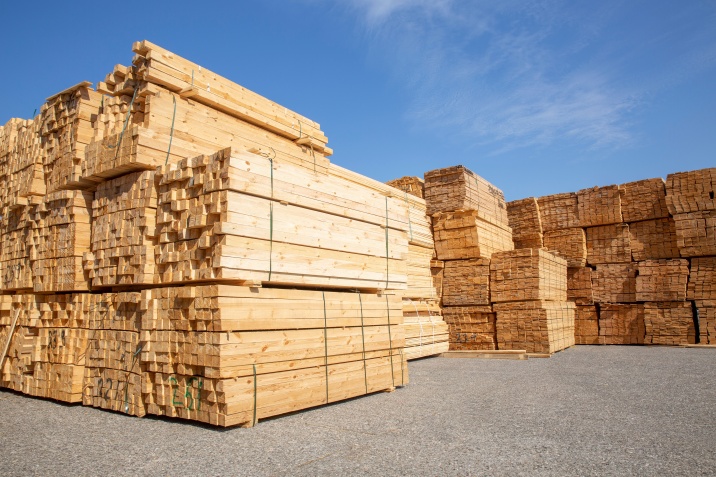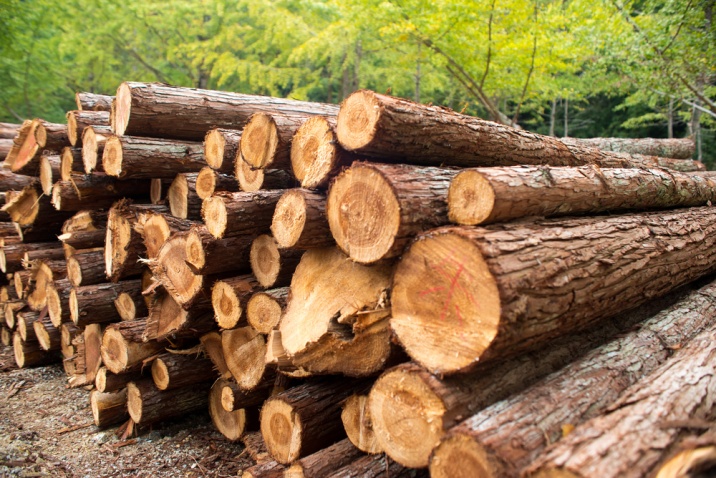Understanding Timber Grades and Classes: What to Know
Timber is widely used in Australia’s construction industry for its strength, versatility, and affordability, especially in regions with abundant plantation forests like New South Wales. The industry’s ties with design, manufacturing, and property sectors are crucial to the economy, with residential construction consuming 75% of sawn timber, along with significant use in furniture and kitchens.
Different projects require different timber properties. That’s why, as a property owner, it’s important to understand timber grades and classes, even if you have a contractor. This knowledge helps you make the right choices for your timber construction project.
What are the classes and grades of timber?
In building inspections, timber grading determines the quality of the wood. This grading system is divided into strength, appearance, and durability. Here’s a brief overview of each category:
- Strength: Structural grading measures a timber’s ability to withstand stress without failing, ensuring reliability in construction and engineering projects.
- Appearance: Aesthetic grading helps assess the timber’s visual suitability for a project, considering factors like colour variation and natural features. However, this grading system does not indicate strength or durability.
- Durability: Ratings indicate how resistant timber is to natural stressors over time, aiding in determining its suitability for specific projects.
Meanwhile, timber classes are determined by durability, meaning how well the timber withstands natural stressors over time. Below are the different classes, each showing how long the timber is expected to last in different conditions:
- Class 1: Timber in this class has the highest durability, lasting at least 40 years above ground and 25 years in-ground, making them suitable for projects exposed to the elements.
- Class 2: This class denotes a life expectancy of 15 to 25 years above ground, renowned for its durability and beautiful features.
- Class 3: In this category, timber typically lasts 7 to 15 years above ground and 5 to 15 years underground, making it suitable for indoor and decorative purposes.
- Class 4: Wood products in this category are the least durable, lasting 0 to 7 years above ground and deteriorating within 5 years underground. However, class 4 remains useful for structural purposes due to its lightweight nature.
Timber grading systems in Australia
Building and renovation projects come with significant costs, making it crucial to consider every material and process involved to ensure success carefully. One important aspect is choosing the right timber, a decision facilitated by the grading system. You already know that timber grades in Australia are categorised based on strength, appearance, and durability to help homeowners and homebuilders choose the right timber size and stress grade.
In Australia, AS 2796 ensures that hardwood flooring products in Australia adhere to specific quality standards for reliable performance and durability.
To ensure quality control and optimal selection, timber is graded using visual, machine, and proof grading. Here’s how each process works:
- Visual grading involves a trained assessor visually inspecting each piece of timber and assigning a grade. It’s commonly used for appearance applications, like timber battens.
- Machine grading uses sensors or testing machines to compare the timber against grade criteria. This method is faster and more accurate than visual grading.
- Proof grading is conducted after other methods for machine-graded timber, and this evaluation is mainly for timber used structurally. It involves testing the material for strength and stiffness by applying specified loads. If the timber withstands these loads, it passes.
Timber grades based on features and applications
Understanding these grades ensures both aesthetic appeal and structural integrity in your projects. Here are the timber grades based on their features and applications:
Select grade
This grade minimises natural timber features like knots, gum veins, and splits. It’s commonly used for high-end joinery and specific interior applications.
Medium feature grade
This timber grade is for you if you want to balance limiting natural features and maximising timber yield. It allows for some natural features like gum veins and knot checks and is suitable for interior design and furniture.
High feature grade
This grade embraces timber’s natural features, showcasing knots, gum veins, and other imperfections. While maintaining machining standards, it emphasises hardwood’s unique character, which is ideal for applications where natural beauty is desired.
Also read: Australian Building Standards: A Homeowner’s Guide to Framing
Structural timber grades
To assess suitability for designated applications, structural timber undergoes timber stress grading. This method employs two methods: visual assessment and machine testing.
Both processes categorise timber based on its strength, load-bearing capacities and compliance with building codes.
F rating (stress grade)
An “F” system in timber grades indicates its strength, with higher grades signifying stronger timber. Typically, unseasoned hardwoods rate around F14/F17, while kiln-dried hardwoods are stronger, ranging from F22/F27. For example, in the case of F17 vs F27 hardwood, F17 can withstand higher stresses/loads compared to lower F-grades, whilst F27 hardwoods offer even greater strength and durability.
Pine is weaker, usually at F5/F8, but some exceptionally strong species can reach up to F34. You can consider F5 timber for applications needing softwood timbers.
MGP rating (stress grade)
Most plantation structural pine undergoes stress grading using machines that measure deflection under a set force. This is represented by an MGP (machine-graded pine) rating, ranging from MGP10 to MGP15.
Additional tests (F7 and MGP10)
Structural timber undergoes stiffness testing, which is influenced by density, fibre quality, moisture content, and defects. MGP10 measures 10 GPa, and F7 measures 18 GPa. Bending strength, affected by defects such as knots, measures 17 MPa for MGP10 and 18 MPa for F7.
MGP vs F-Grades
MGP and F-grade timber are commonly used in construction but have different strengths and characteristics. MGP timber is machine-graded and has a more uniform appearance, while the F-grade system is visually graded and can have a wider range of appearances.
F-graded material is generally used for applications where the appearance of the timber is important, such as flooring and decking. MGP timber is typically used for structural applications like framing and load-bearing walls.
When choosing between MGP and F-grade timber, it’s important to consider the wood’s intended use and its strength and durability requirements.
Laminated veneer lumber
Laminated Veneer Lumber (LVL) is an engineered wood product commonly used in construction and other structural applications. It is made by bonding thin layers of wood veneers with adhesives, usually in a parallel grain orientation, to create a strong and durable material.
Considerations for choosing the right timber grade and class
The grade and class of timber you choose will depend on several factors.
Structural requirements
Start by identifying your project’s purpose. Outdoor furniture or decking requires weather-resistant and decay-resistant timber, while indoor furniture prioritises aesthetics and durability. Also, consider timber workability; softwoods like pine or red cedar are easier to work with, while hardwoods like oak or spotted gum offer enhanced durability.
Durability
When considering durability, try options like teak, redwood, and cedar, which are known for their resistance to rot, pests, and decay and are best for outdoor applications. Indoors, prioritise visually refined timber for durability, avoiding rough outdoor decking materials for indoor furniture. Additionally, consider H2 vs H3 timber for moderate durability needs and explore options like H5-treated pine for enhanced durability in outdoor environments.
Budget limitations
When budgeting, compare prices of softwood (like pine) and hardwood (like oak). Don’t forget extra costs, such as tools and finishes, which can affect the overall project expense. Consider long-term value alongside budget constraints.
Visual appeal
Enhance your project’s visual appeal with timber’s diverse characteristics. Regardless of your aesthetic choice, timber offers unique grain patterns, timber colours, and textures to elevate your design.
On quality assurance and compliance
Sourcing timber from certified suppliers, such as those endorsed by the Timber Certification Scheme (TCS), offers the following benefits:
- It meets customer expectations for sustainability, as certified products carry the PEFC label, providing proof of their sustainable sourcing. These brands position themselves as environmentally responsible and contribute to fulfilling Sustainable Development Goals (SDGs).
- Certification ensures compliance with legislation, including international forest management standards and regulations like the EU Timber Regulation (EUTR) and the US Lacey Act.
- Certified suppliers offer traceability proof through Chain of Custody certification, which tracks sustainable wood sources verified by third-party auditors, ensuring the exclusion of unsustainable sources.
Choose the right timber
Whether you are building a house or a business space, understanding timber grading systems is crucial to ensure a successful project. These systems categorise timber based on strength, appearance, and durability, ensuring the right material and structural integrity for each application. Seek advice from experienced builders when using these systems to make informed decisions when buying timber.
FAQs on timber grades and classes
What are the three methods of grading timber?
The three methods of grading timber are visual stress-grading, machine stress-grading, and machine proof-grading. Grading methods must produce consistent and repeatable results to ensure reliability, typically following industry or national standards.
How is timber graded in Australia?
In Australia, timber is graded based on strength. These grades, established by the Australian Standard, assist consumers in choosing the best timber for their requirements. The grades range from Select Grade, which features minimal natural characteristics, to Rustique Grade, which boasts the highest amount of interesting imperfections like knots and gum lines.
What’s the difference between MGP10 and MGP12?
The difference between MGP10 vs MGP12 lies in their applications and building requirements. MGP10 is the standard choice for general use, meeting minimum requirements for building work and wall framing. MGP12 is suitable for wall framing and specific floor joists as well.

